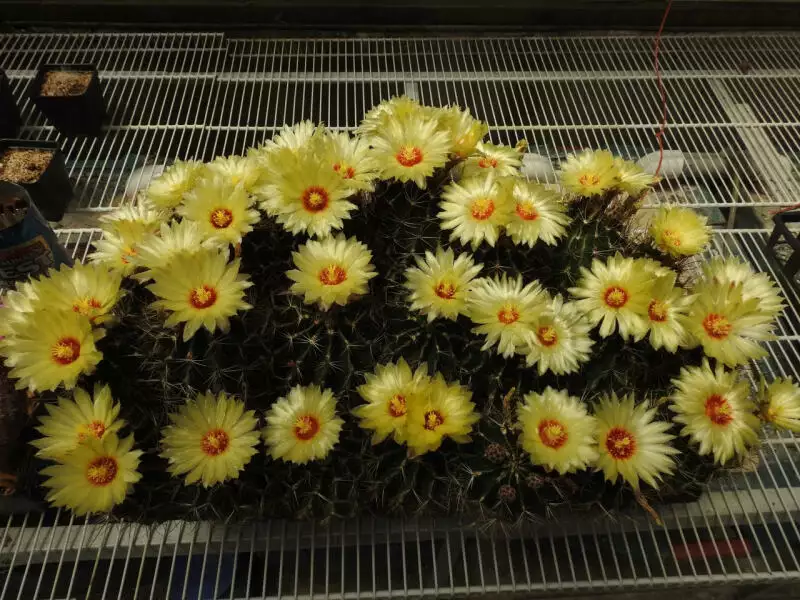Hamatocactus setispinus 7/3/17
There are about 25 plants here. They flower in amazing synchrony. The next day the flowers will also open, with maybe 4 to 8 new stragglers, which in turn will flower the next day. Each flower lasts two days. This show repeats about ten times during the growing season. I wish they would stagger. The pollen from this species is reputed (in one book written by a couple of Czechs) to allow pollen from a different plant to self-pollinate the different plant, even though that plant is not normally self fertile. The plant grown from the resulting seeds looks just like the female parent plant, with no obvious intermixing of any physical characteristic of H setispinus. I have two examples where this has apparently worked, so far. I have about 20 more seed lots that I've made in the past two years, waiting for me to try growing the plants. The definitive experiment, of course, would be DNA analysis of all the plants involved. I thought I had a prof at Amherst College interested, but no recent communication. The problem is probably funding. Even at Amherst, research isn't cheap, It definitely isn't free, and free is what I asked for. (18/32)
<<Prev
Index
Next>>

